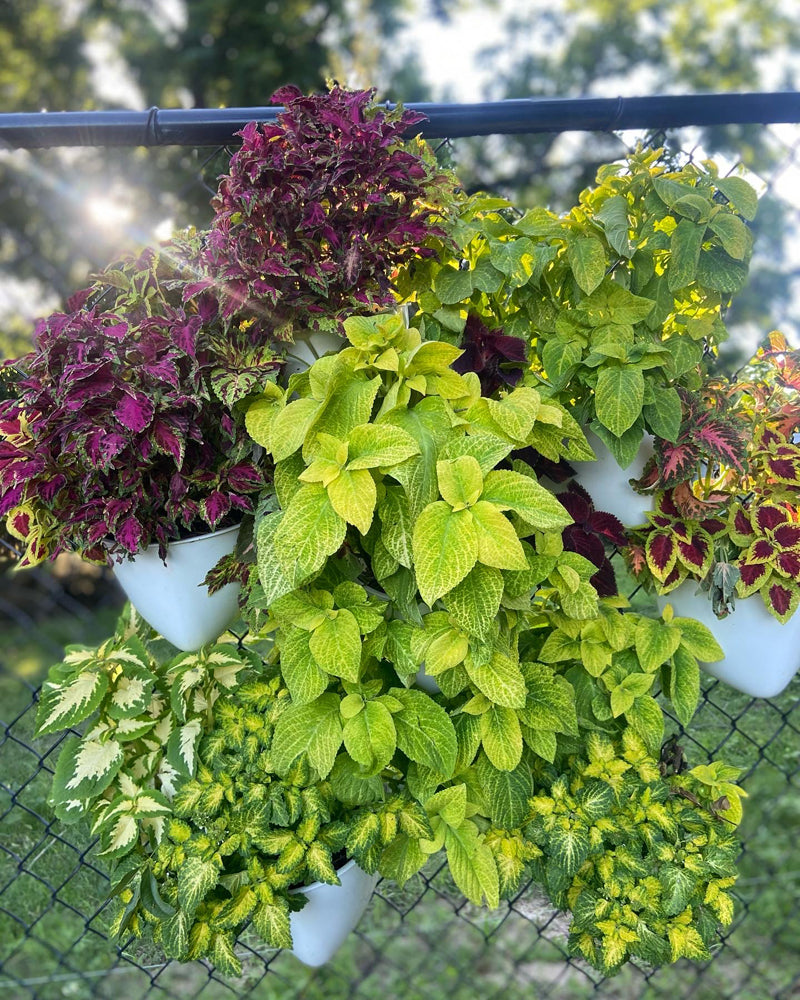
By Bryan Meador
Vertical Gardens: Harnessing the Power of Sead Pod Planters to Revitalize Urban Spaces
Living in an urban area often means confronting a stark concrete jungle that lacks the comforting presence of nature. It's a reality many city-dwellers grapple with. But, there is a solution: vertical gardens. These innovative installations, particularly those made using Sead Pod planters from Plant Seads, can transform drab, heat-absorbing walls into vibrant, temperature-regulating oases. This post explores how vertical gardens significantly cool urban spaces, reduce flooding, enhance sustainability, and uplift wellbeing.
- Vertical gardens can help lower urban temperatures
- They play a crucial role in controlling urban flooding by absorbing rainwater
- These green installations promote sustainability by repurposing waste
- Vertical gardens boost urban aesthetics, thus enhancing wellbeing

Cooling Urban Spaces with Sead Pod Planters
Concrete and brick surfaces, common in cities, absorb and radiate heat, exacerbating urban heat islands. But, Sead Pod vertical gardens present an efficient, eco-friendly solution to this pressing issue. Acting as natural air conditioners, they lower ambient temperatures, making urban life more comfortable.
- Green Walls: Sead Pod planters contribute to creating what's known as 'living walls.' These lush installations have been proven to reduce wall surface temperatures by up to 10 degrees Celsius, significantly decreasing the overall urban heat.
- Shade and Insulation: Apart from their cooling effect, Sead Pod vertical gardens offer natural shading and insulation. By doing so, they minimize the reliance on air conditioning in buildings, thus reducing energy consumption. Further reading on this can be found here.
- Air Quality: Plants are nature's best air purifiers. Through photosynthesis, the green walls of a Sead Pod vertical garden detoxify the air, removing harmful pollutants and releasing fresh oxygen. Read more about this here.

Section 2: Controlling Urban Flooding with Vertical Gardens
Urban flooding, arising from an abundance of non-permeable surfaces, is a prevalent issue in many cities. The answer? Sead Pod vertical gardens. They absorb rainwater, reducing surface runoff and helping control stormwater.
- Rainwater Management: Vertical gardens' ability to absorb rainwater significantly reduces surface runoff. This capability is a significant stride towards managing stormwater and preventing flooding.
- Increasing Permeable Surfaces: With their plant-filled surface, Sead Pod planters increase permeable areas in cities, allowing for efficient water absorption and less water stagnation. This study offers additional insight.
- Drip Irrigation: Sead Pod vertical gardens often use effective drip irrigation systems, which reduce water use and prevent waterlogging, further decreasing flood risks.

Section 3: Sead Pod Planters: Pioneering Sustainability
Sead Pod vertical gardens, a hallmark of Seads, are not only visually appealing but also symbolize a commitment to environmental sustainability. They repurpose waste, reduce carbon footprints, and promote local food production, underscoring the essence of a circular economy.
- Recycled Materials: Sead Pod planters are crafted from 100% recycled plastic, transforming waste into a thriving green facade. Read more about the benefits of using recycled materials here.
- Waste Reduction: By giving a new purpose to plastic waste, Sead Pod vertical gardens minimize the amount of plastic that ends up in landfills or oceans.
- Local Food Production: The potential of Sead Pod vertical gardens extends to urban agriculture. They can house a variety of herbs, vegetables, and fruits, reducing the carbon footprint linked to food transport. Learn more about urban food production here.

Section 4: Sead Pod Vertical Gardens: Enhancing Urban Wellbeing
Sead Pod vertical gardens are more than just functional; they're a breath of fresh air in the concrete jungle. By infusing aesthetic appeal into urban areas, they significantly enhance residents' wellbeing and satisfaction with their living environment.
- Green Spaces: Access to green spaces can drastically reduce stress and improve mental health. Vertical gardens bring these benefits to the heart of the urban jungle. Check out this study that confirms the link.
- Biodiversity: Sead Pod planters create habitats for various species, promoting urban biodiversity. Residents can experience nature up close, fostering a deeper connection with the environment. Learn more here.
- Aesthetics: Vertical gardens transform uniform brick and concrete spaces into vibrant landscapes, making cities more liveable and pleasant.
In conclusion, vertical gardens, particularly Sead Pod planters, offer benefits that extend beyond their visual appeal. By cooling urban spaces, mitigating flooding, promoting sustainability, and enhancing wellbeing, they offer a dynamic, green solution for modern cityscapes. As we continue to nurture and expand this technology, we're making a tangible investment in a more sustainable and healthier urban future.
